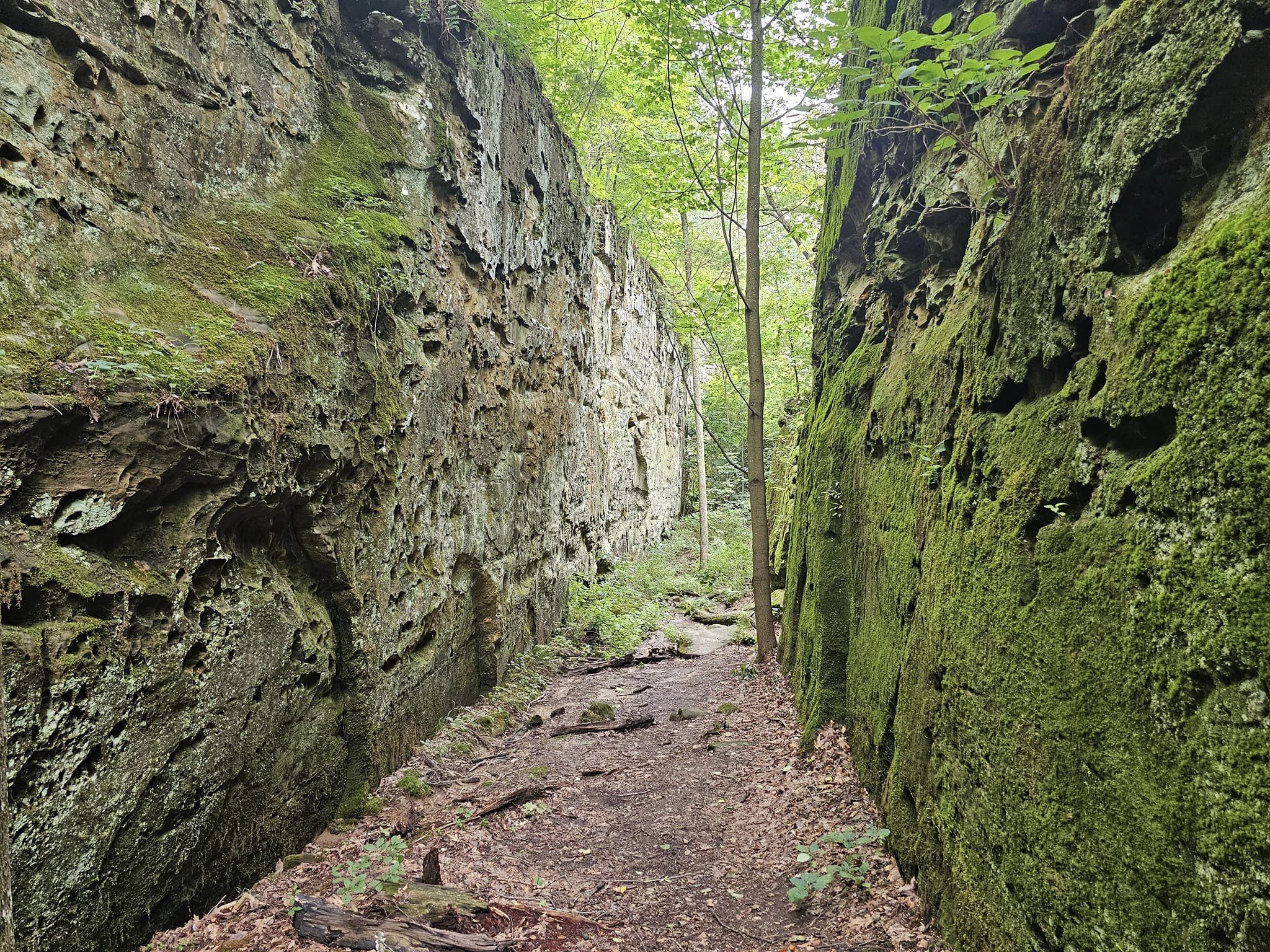With its breathtaking natural beauty and unlimited opportunities for outdoor recreation, a trip to Giant City State Park near Carbondale is sure to delight visitors of all ages. From camping and horseback riding to fishing and rappelling, it’s an outdoor lover’s paradise. Giant City State Park is located at 235 Giant City Road in Makanda Illinois. For more information, click here.
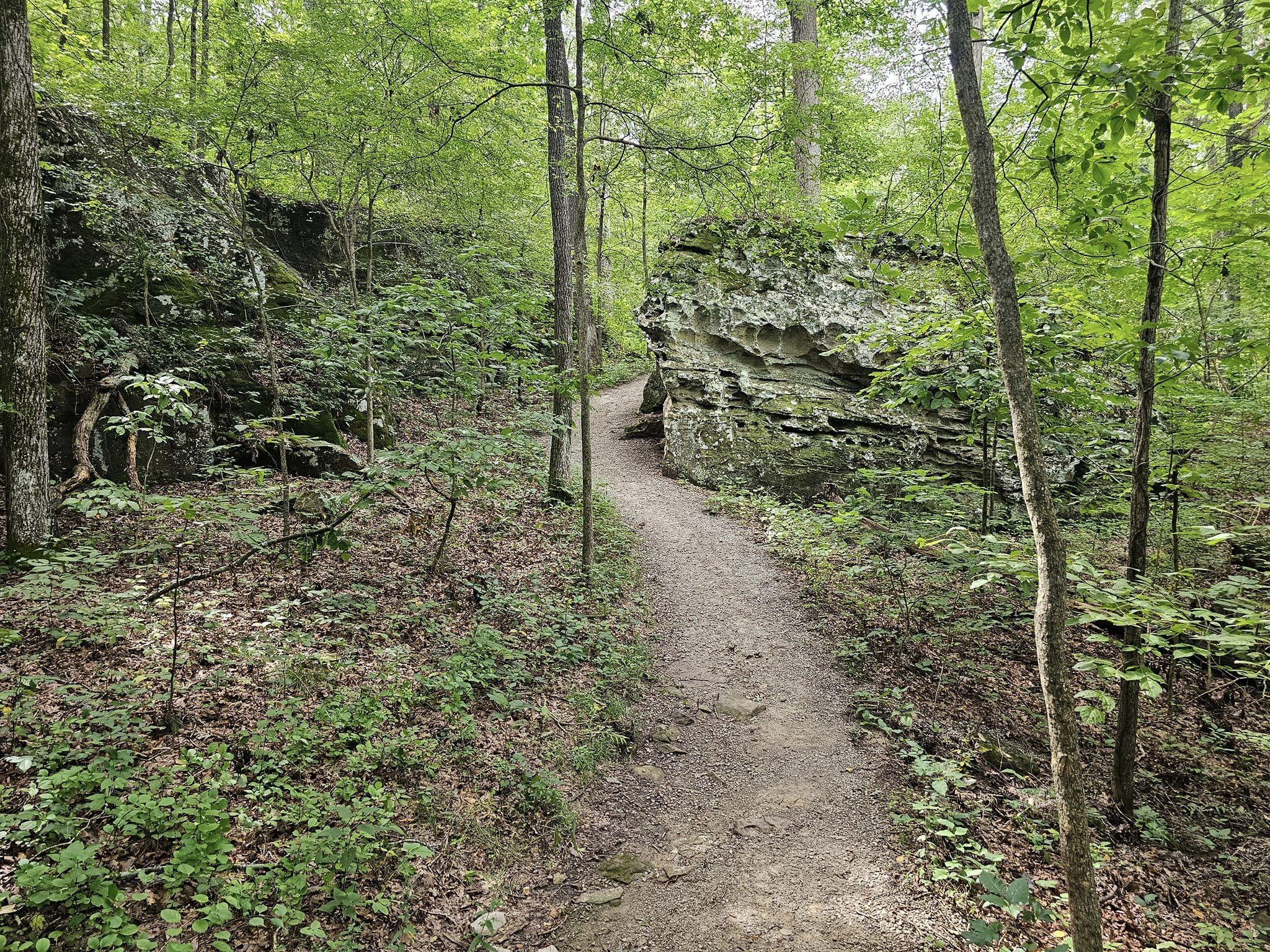
Visitors will marvel at the many hiking trails. Especially popular is the Giant City Nature Trail, home of the “Giant City Streets” – huge bluffs of sandstone formed 12,000 years ago.
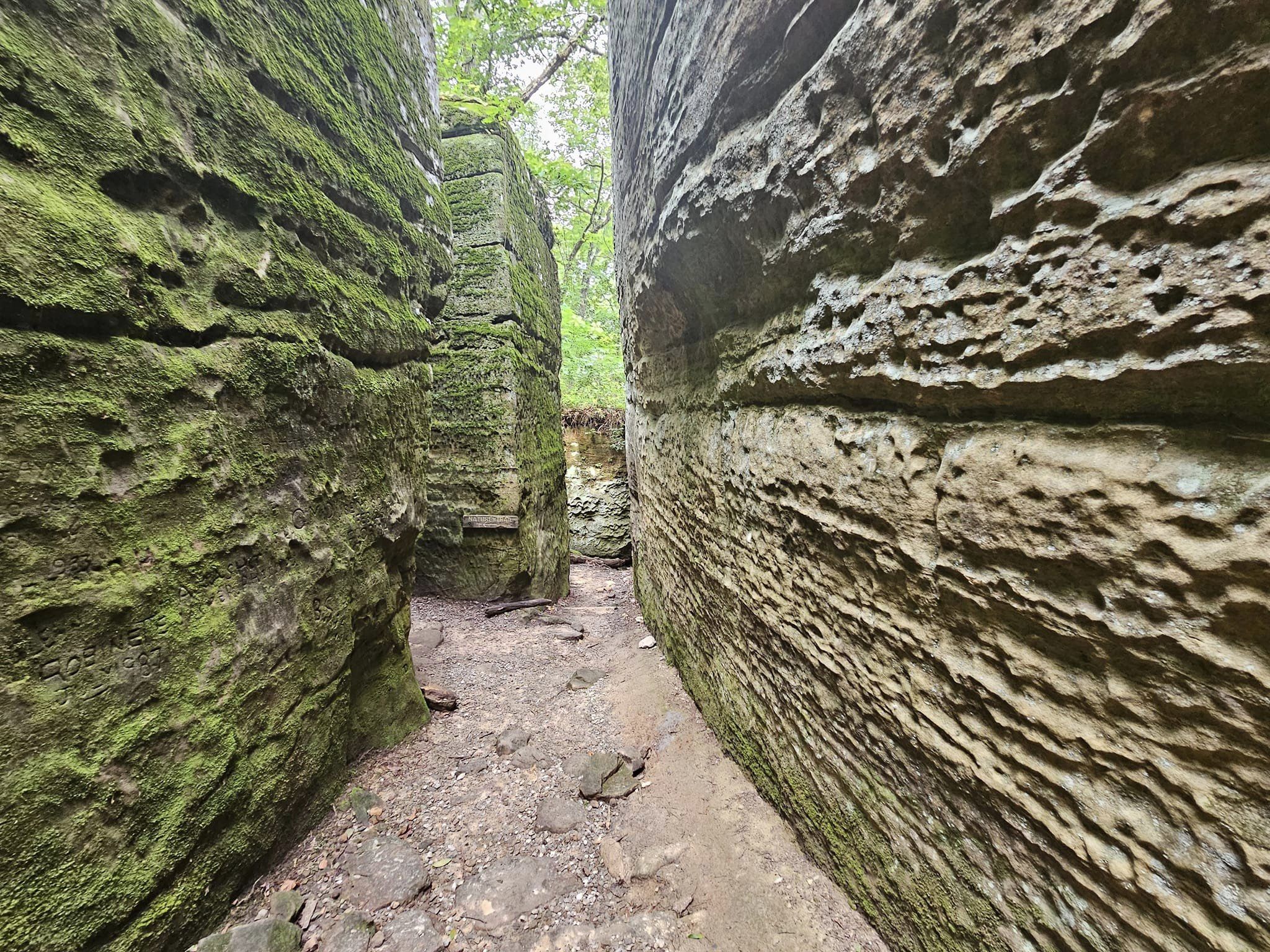
The Giant City Nature Trail is one of the best not only at Giant City State Park but also within the entire Midwest. This 1 mile hike is the essence of the word short but sweet!
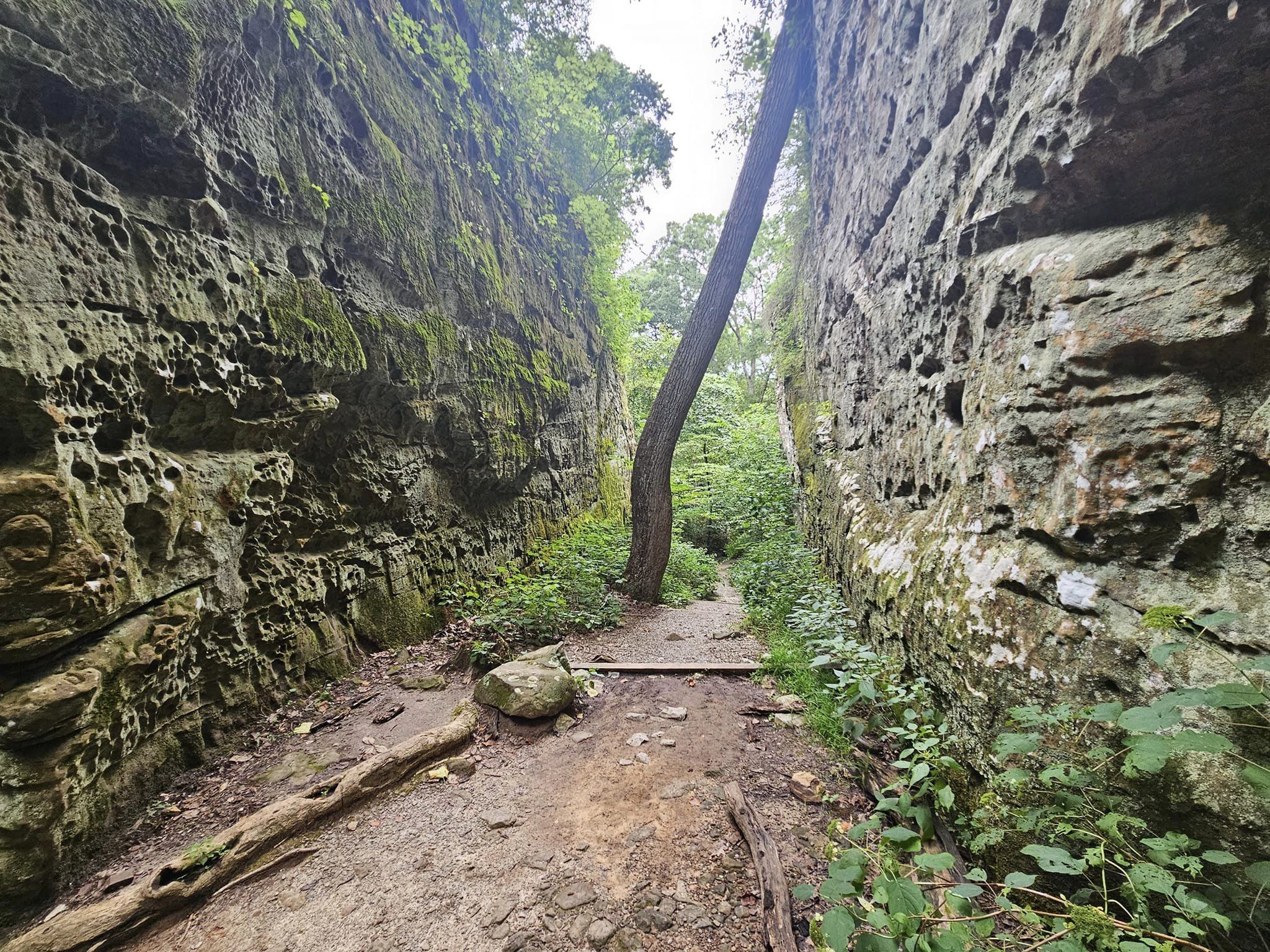
While the trail is only a mile in length, you will still spend a fair amount of time on the trail. It took me nearly two hours to complete. There is just so much to see and explore, you could spend hours climbing around.
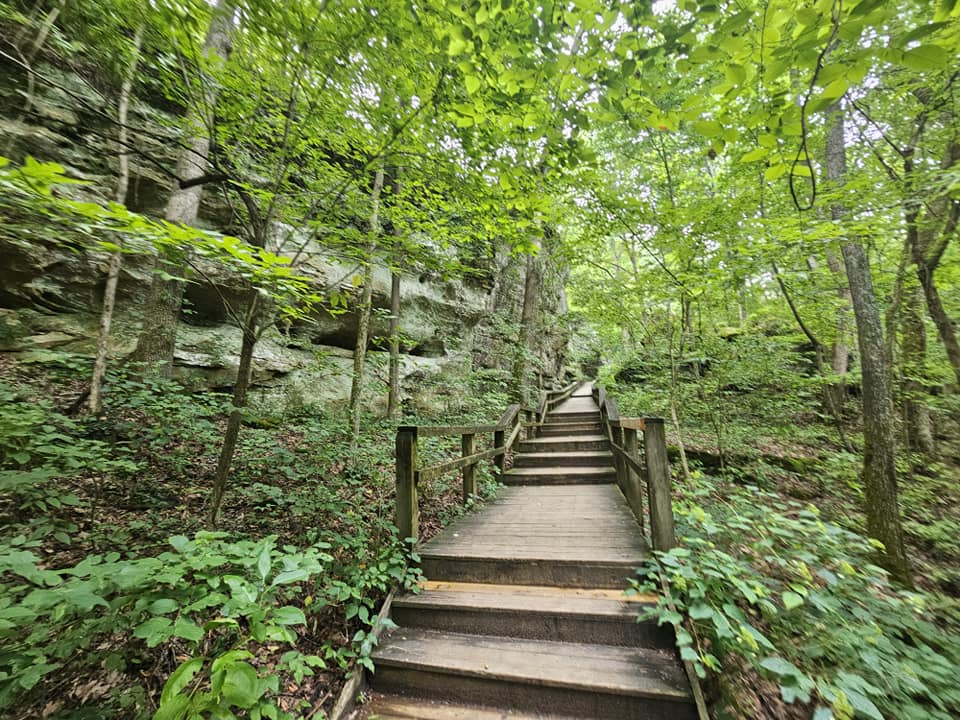
The Giant City Nature Trail is one of my favorite trails I have hiked however it can be dangerous as well. Be careful-steep cliffs are dangerous and sandstone can be slippery. Please stay on designated trails. Poison ivy exists on this trail. Copperhead snakes (venomous) hibernate in the sandstone bluffs.
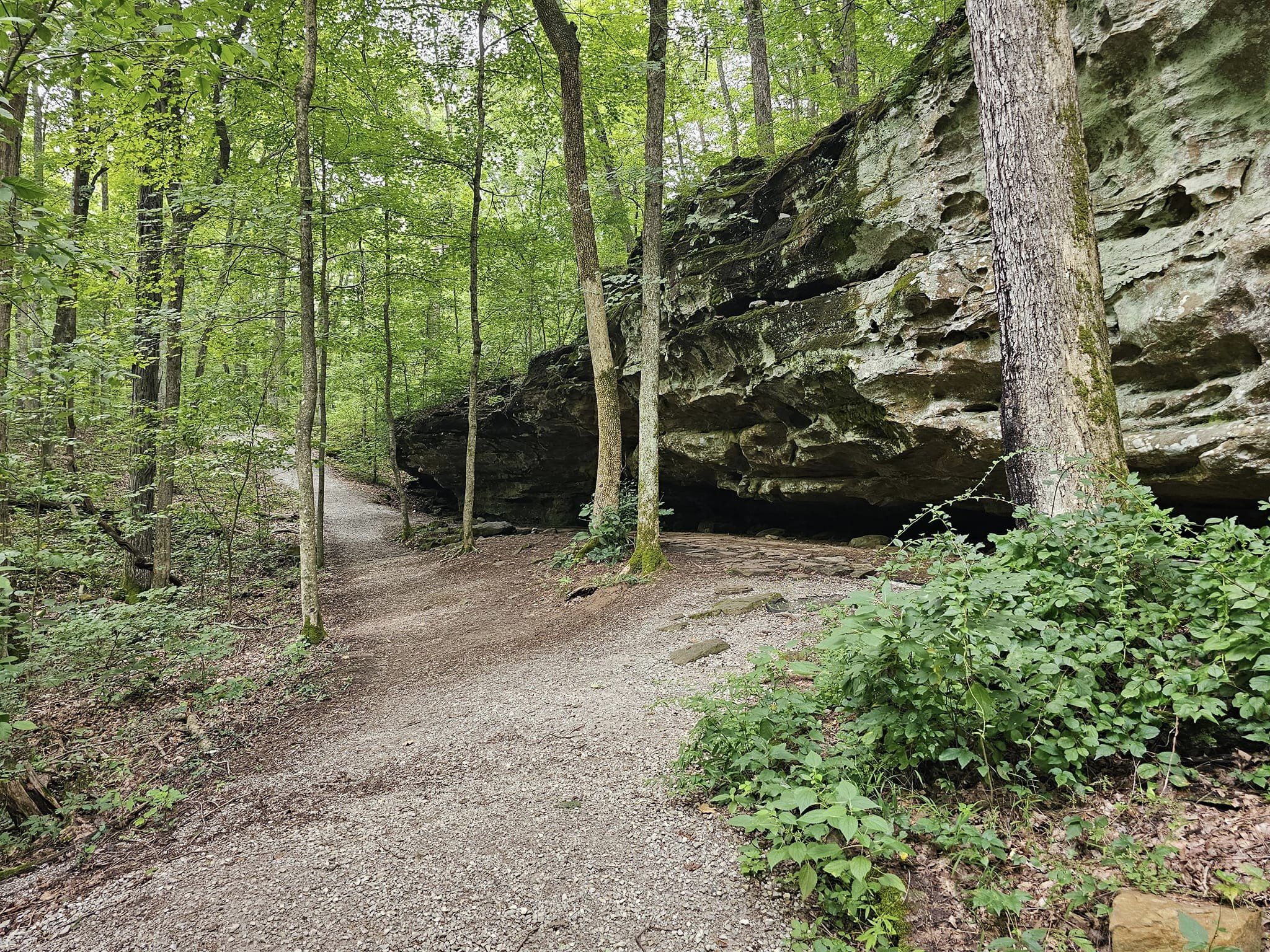
The trail has some amazing features including: caves, balanced rock, towering bluffs, huge trees, and countless rock formations! The highlight of the trail is no doubt the Giant City Streets. Traversing through these streets is an adventure all its own.
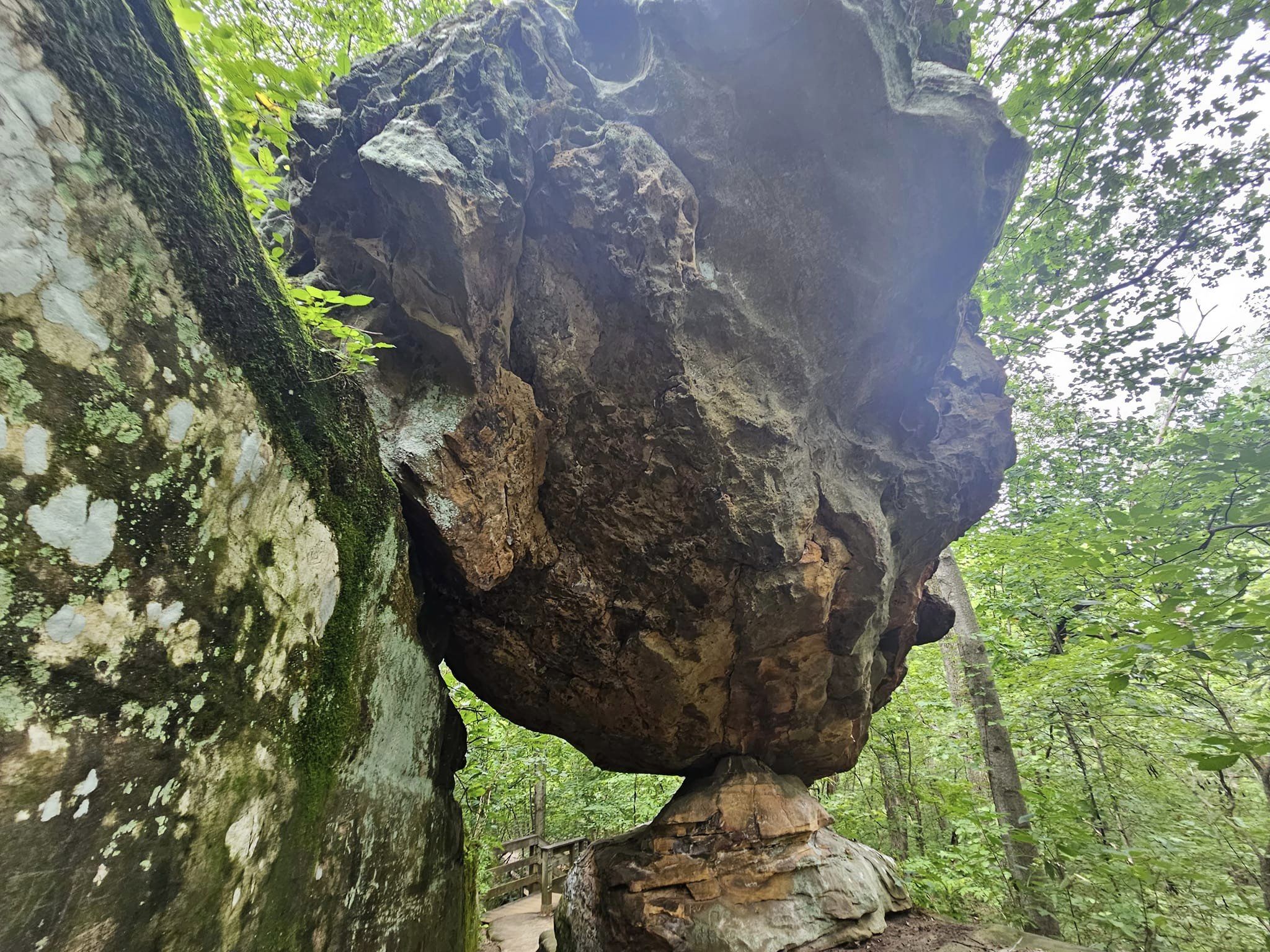
As you walk through the rich Oak-Hickory woodland, try to imagine the daunting task that the pioneers had to make the
massive timber disappear. Some of the larger trees that once stood here had girths of up to eight feet and stood to heights of 150 feet. Clearing the land to till the soil was hard work, especially because only a few of the smaller trees were needed to build the log cabins and split rail fences. Most of the smaller trees were piled up and burned because of this. The trees around you are less than 150 years old, and mere saplings when compared to the older virgin trees of an uncut forest.
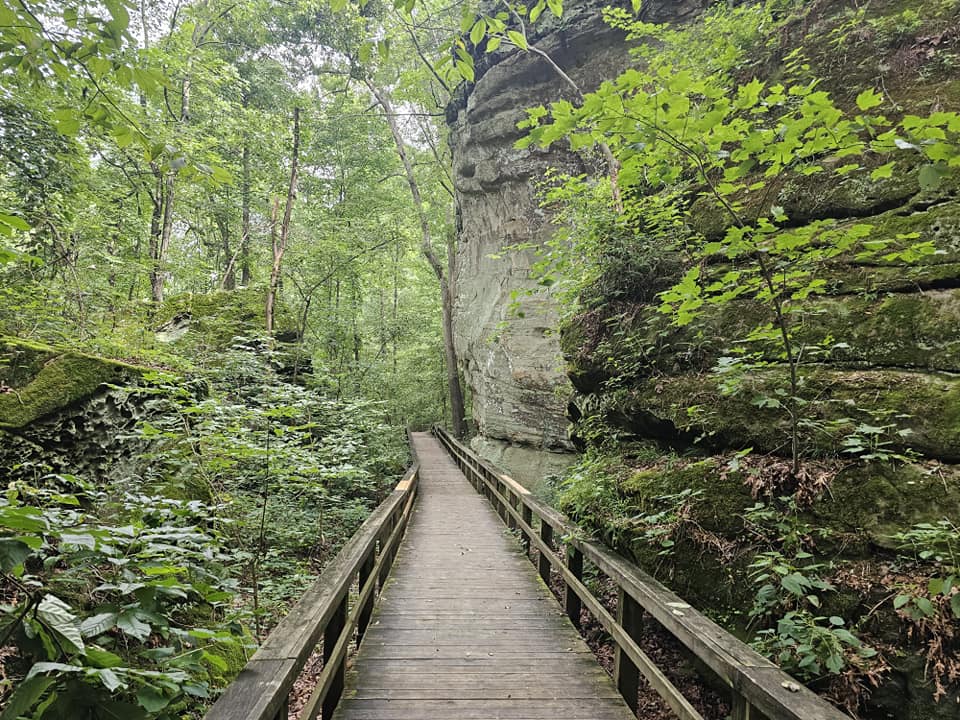
At the end of the long wooden walkway you will catch your first glimpse of the park’s namesake. You have reached the “giant city streets.” Notice how the height of the bluff walls and trees on top force the trees in the valley to grow above them to reach sunlight and branch out. Also, notice the temperature changes in the deeper narrow “streets.” This huge hill of sandstone rests on Drury shale, which breaks easily and is slippery. Past earth movements and the melt water of glaciers some 12,000 years ago have aided the sliding of sandstone on the slippery shale to leave narrow canyons between the bluffs. Some geologists also suggest that slightly acidic rainwater is eroding the sandstone walls and is the cause of these passageways. A Visitor’s Center display explores these theories in more depth.
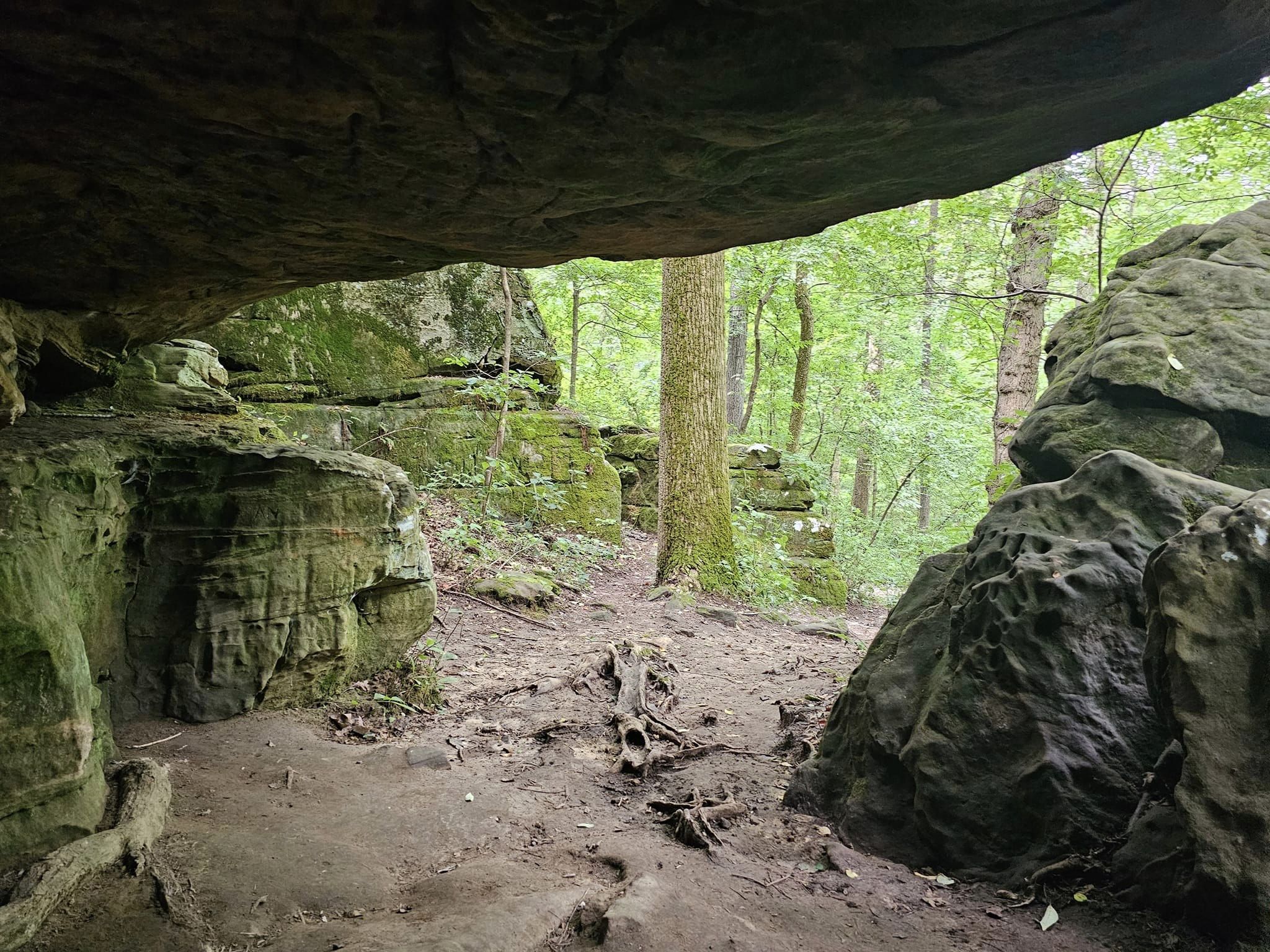
Pioneers had not seen skyscrapers, so these sheer bluffs seemed like the “streets of a giant city” to them. Imagine a walk through here when black bears and mountain lions hunted these hillsides (black bears disappeared from Illinois in 1822 and mountain lions disappeared later in the century). Many weary travelers must have enjoyed the protection of these walls from the wind and weather.
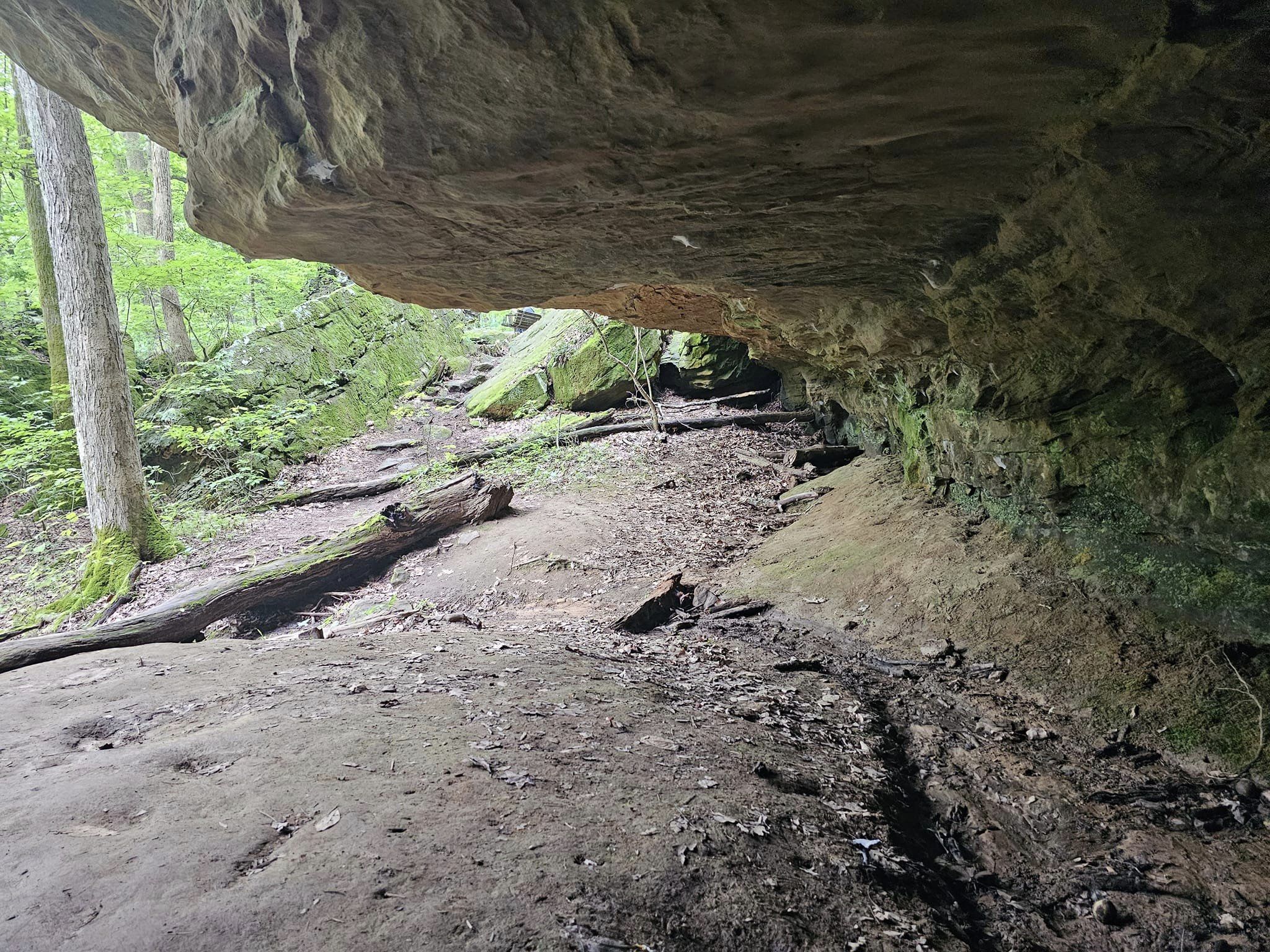
Weather its for the historical significance, the natural beauty, or just spending time in nature. Do yourself a favor a hike this trail, this is an experience you won’t soon forget and you will be hard pressed to find a better trail system.
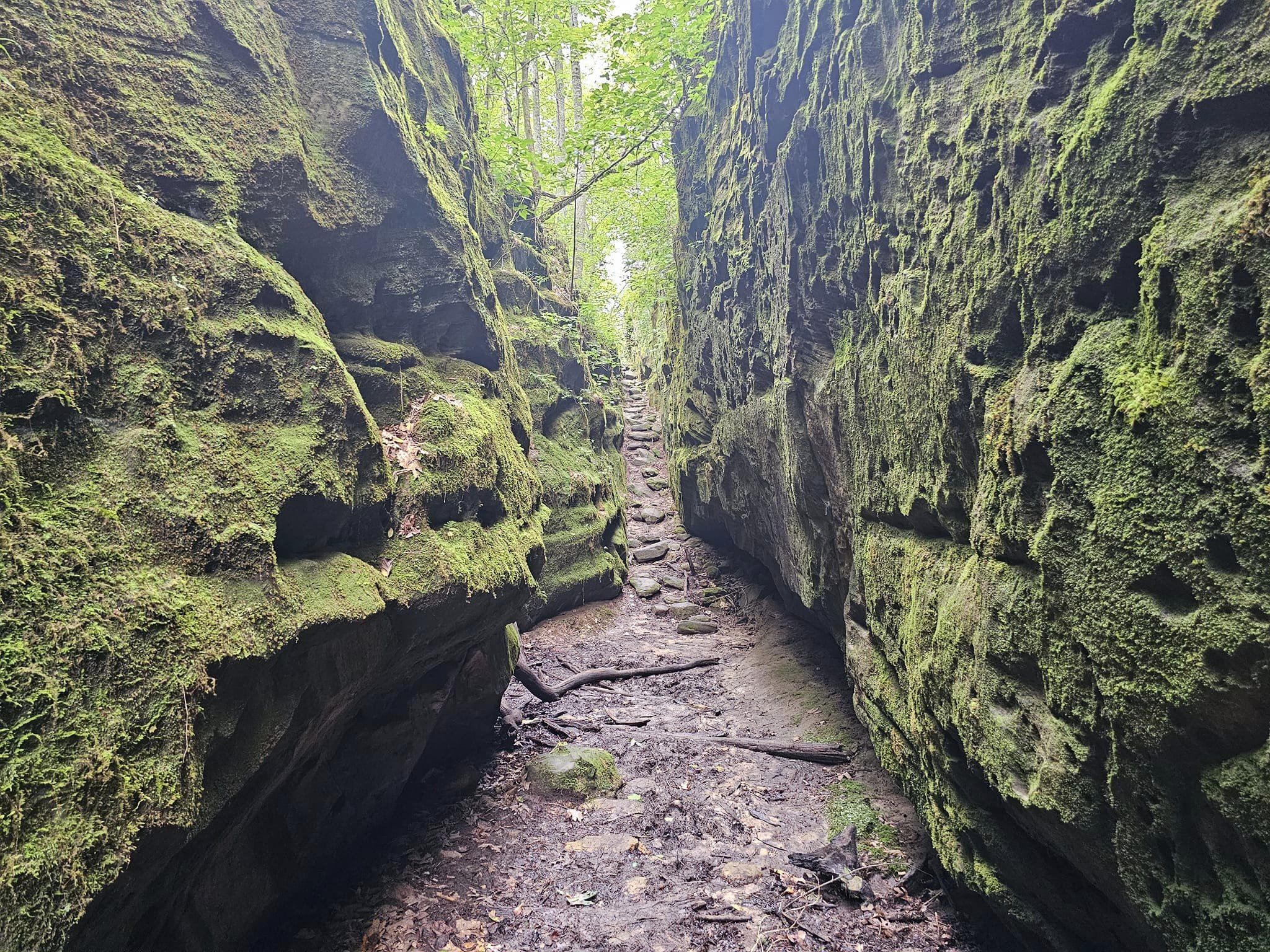
If your looking for nearby lodging, click here. If you want to find more hidden gems nearby, click here. For the areas best family activities, click here.
